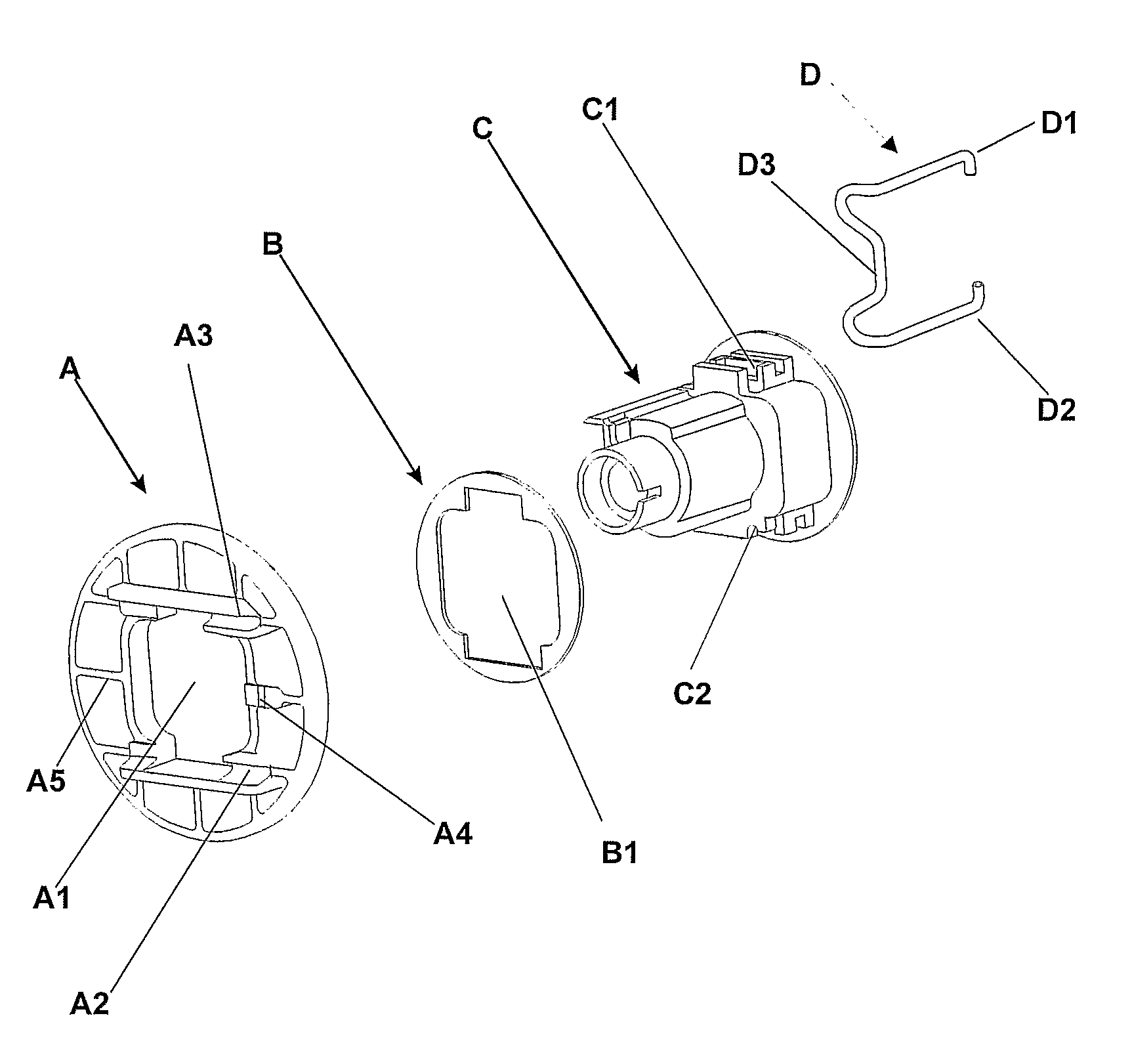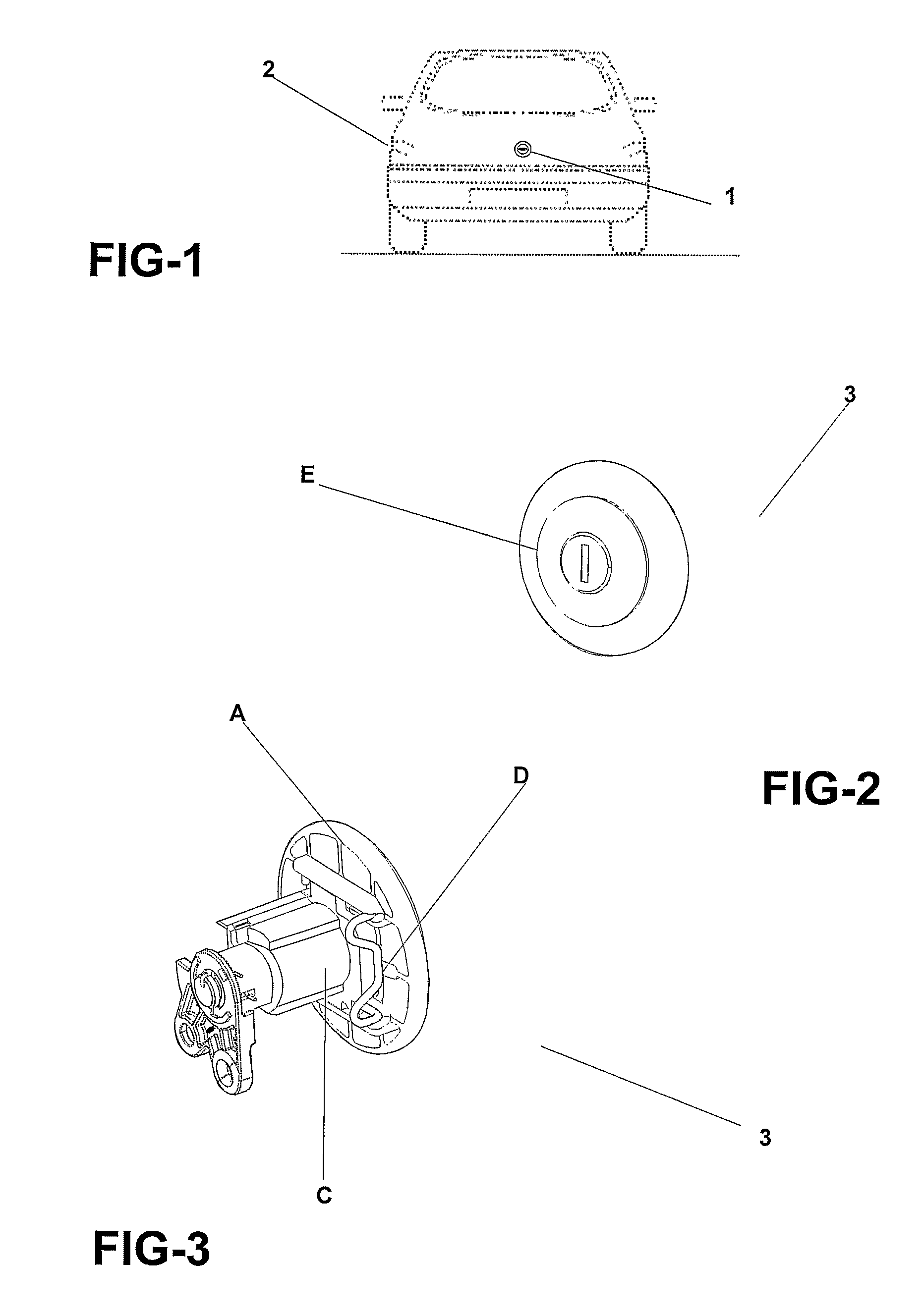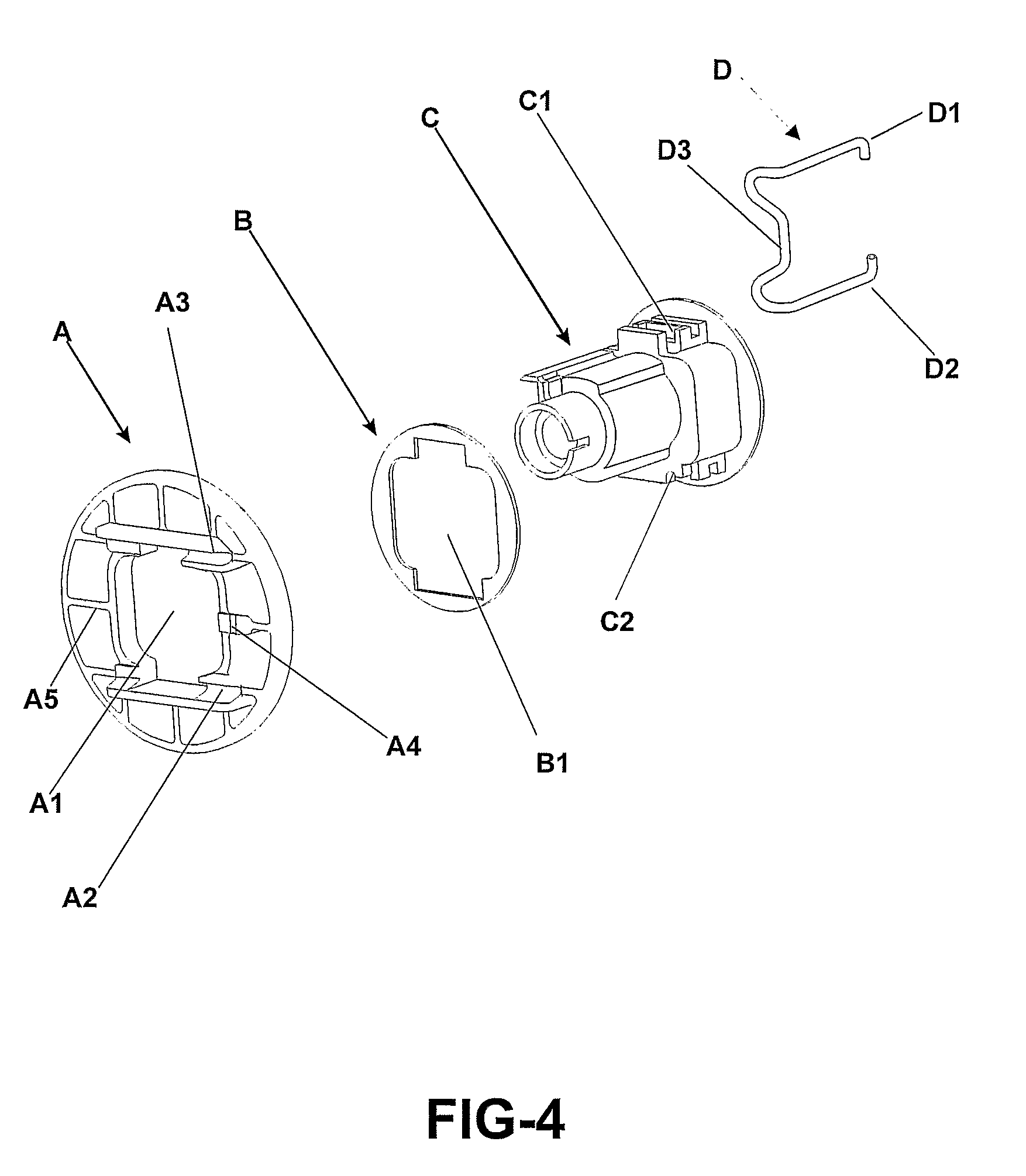Constructive improvement to an anti-theft lock device applied to automobile trunks
a construction improvement and trunk lock technology, applied in anti-theft devices, lock applications, transportation and packaging, etc., can solve the problems of inferior work conditions, deficient constructive and functional concepts of trunk locks, and loss of productivity of trunk locks, so as to minimize the physical and visual action of assemblers and avoid out-of-spec assembly problems.
- Summary
- Abstract
- Description
- Claims
- Application Information
AI Technical Summary
Benefits of technology
Problems solved by technology
Method used
Image
Examples
Embodiment Construction
[0040]The following detailed description should be read and interpreted with reference to the drawings, where identical elements in different drawings are numbered equally, that is to say the same number is kept for an element used in two embodiments of the improvement. The drawings are highly diagrammatical, representing selected embodiments, but are not intended to limit the scope of the utility model, which is merely limited to that set forth in the set of claims.
[0041]With regards the illustrated drawings, in FIG. 1 the applicant understands that it is appropriate to present a representation of the anti-theft lock system (1), duly assembled on the automotive vehicle (2), and FIG. 2 is a graphical representation of the outer part (E) of the anti-theft lock-type product (1) on the trunk hood (3).
[0042]However, FIG. 3 effectively demonstrates the improvement in the anti-theft lock (1) now applied for, in a preferred embodiment, based on which improvements can be obtained in terms o...
PUM
 Login to View More
Login to View More Abstract
Description
Claims
Application Information
 Login to View More
Login to View More - R&D
- Intellectual Property
- Life Sciences
- Materials
- Tech Scout
- Unparalleled Data Quality
- Higher Quality Content
- 60% Fewer Hallucinations
Browse by: Latest US Patents, China's latest patents, Technical Efficacy Thesaurus, Application Domain, Technology Topic, Popular Technical Reports.
© 2025 PatSnap. All rights reserved.Legal|Privacy policy|Modern Slavery Act Transparency Statement|Sitemap|About US| Contact US: help@patsnap.com



